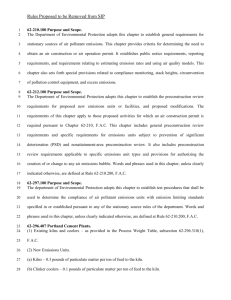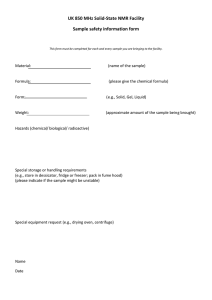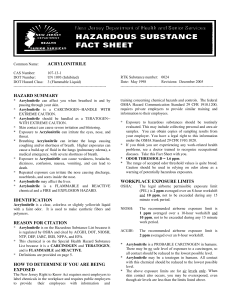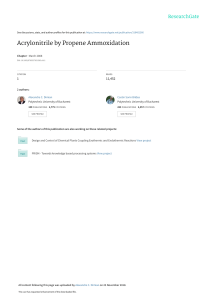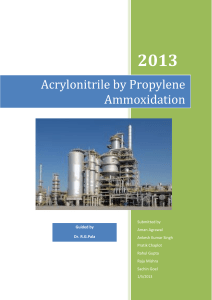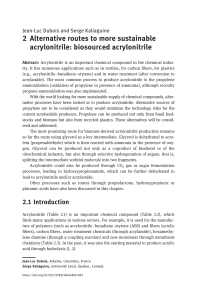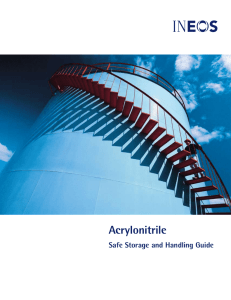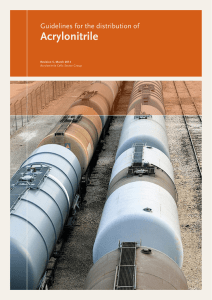McMaster University RMM # 500 Final
advertisement
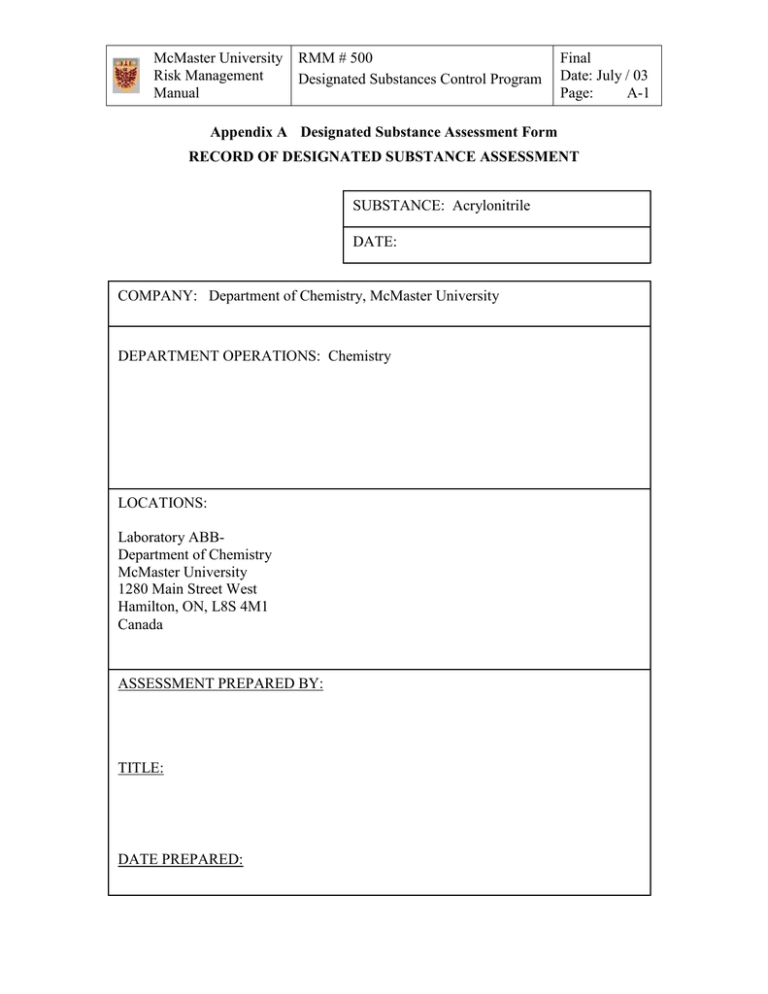
McMaster University Risk Management Manual RMM # 500 Designated Substances Control Program Final Date: July / 03 Page: A-1 Appendix A Designated Substance Assessment Form RECORD OF DESIGNATED SUBSTANCE ASSESSMENT SUBSTANCE: Acrylonitrile DATE: COMPANY: Department of Chemistry, McMaster University DEPARTMENT OPERATIONS: Chemistry LOCATIONS: Laboratory ABBDepartment of Chemistry McMaster University 1280 Main Street West Hamilton, ON, L8S 4M1 Canada ASSESSMENT PREPARED BY: TITLE: DATE PREPARED: Appendix A A-2 APPLICATION - WORKSHEET 1: IS THE DESIGNATED SUBSTANCE PRESENT? 1. Do any material safety data sheets from your suppliers indicate the presence of the substance? YES X NO 2. If substance is present, indicate the department where it is used, nature of the use (i.e. Direct or indirect) and the quantity used per month or year: Product Name Acrylonitrile Department How Used? Direct / Indirect Chemistry Direct Quantity Per Month / Year Less than 50g/year CONCLUSIONS Read statements and check applicable box: Substance not present anywhere in workplace; regulation does not apply No Assessment needed X Processes / activities have been identified where substance present. Proceed to worksheet 2. Appendix A A-3 APPLICATION - WORKSHEET 2: IS WORKER EXPOSURE LIKELY 1. In what form does the substance enter the plant? Product Title: Elemental arsenic and Arsenic compounds Type of Container: Bottle or flask Size of Container: 4L or less 2. Is this form altered during use or in the operation: YES If YES, indicate altered form: 3. ◙ NO poly(acrylonitrile) Is there a possibility of the substance being releases into the workplace ◙ environment during normal use? YES NO If YES, indicate the stage of the operation or areas where this can occur. 4. If YES, to Question 3, specify the job functions and approximate number of employees who might be exposed: Job Function Number of Employees 5. If YES, to Question 3, Indicate how workers could be exposed: Inhalation Ingestion Skin Absorption Skin Contact 6. If NO, to Question 3, is there a likelihood of escape due to leaks, accidents, etc.? YES 7. NO ◙ Are workers likely to be exposed? YES NO ◙ CONCLUSIONS Are there any activities / situations where exposure by any route is likely YES NO ◙ If NO, no further action is necessary. Date Completed _______________________ If YES, an assessment is necessary – proceed to Section III Note: If protection against exposure has been left up to some engineering control measure which can fail, or deteriorate for any reason, or to a work hygiene practice, an assessment is necessary - Proceed to Section III Appendix A A-4 ASSESSMENT – WORKSHEET 3: PROCESS DESCRIPTION NAME OF PROCESS: Process Flow Arsenic chemistry Description 1.Acrylonitrile will be handled using standard chemistry techniques (see below): Non-dry acrylonitrile will be stored in a bottle located in the organic chemicals section of the lab (flammable solvents cupboard). When dry acrylonitrile is required, it will be stored in a sealed argon-filled 2.flask in a fume hood or an argon-filled glove box. Manipulations involving acrylonitrile will be performed inside a fume hood or inside an argon-filled glove box that is vented to the fume hood duct work. 3.Gloves (in addition to a lab coat and safety glasses) will be worn whenever chemistry or other manipulations involving acrylonitrile are conducted. All vessels containing acrylonitrile will be clearly labeled as such. Whenever possible, acrylonitrile will be transferred between the 4.glove boxes and fume hoods within sealed glass apparatus, with secondary containment. All acrylonitrile-containing waste will be disposed of into dedicated well labeled waste containers stored within a fume hood. An MSDS sheet for acrylonitrile is available in the lab, will be read prior to the start of work, and would be used for guidance in the 5.event of a spill. Students and PDFs will be informed of the above safe laboratory practices prior to commencing any work involving acrylonitrile. Likely Exposure Yes / No No



